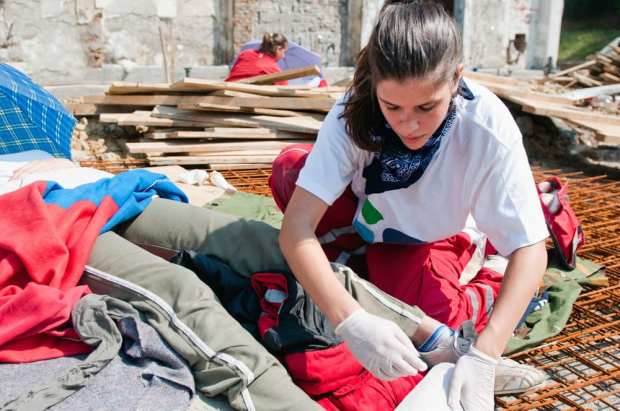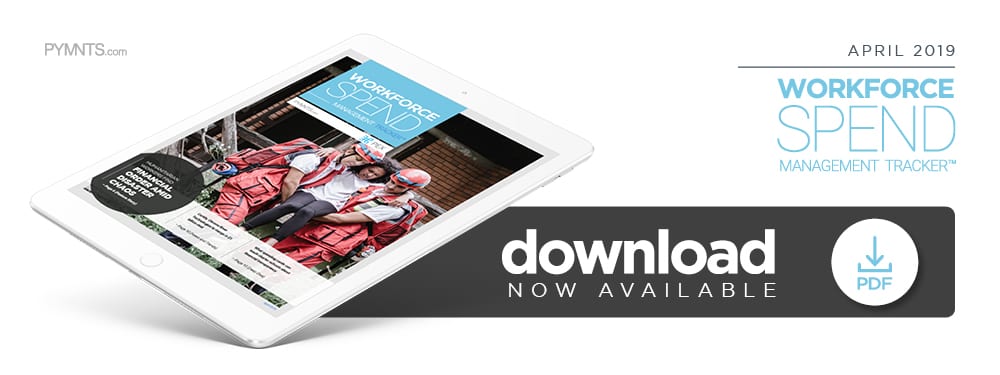Humanitarian Workers Find Financial Order Amid Disaster Chaos

When natural and man-made disasters strike, local residents need fast, easy access to medical supplies. However, ensuring that funds are spent appropriately at the disaster site can be complicated, says Kate Dischino, VP of emergency programs for Americares. In the new Workforce Spend Management Tracker, Dischino discusses the nonprofit’s mobile-first approach to managing expenses, while helping relief workers stay organized in times of chaos.
When disasters strikes, humanitarian organizations’ aid workers rush to impacted sites to provide food, clean water, shelter, medical supplies or other much-needed resources.
Nonprofits like Americares respond specifically to disaster-afflicted communities’ medical needs, working to deliver medicine and related supplies to residents who need access to life-saving treatments for preexisting conditions or injuries sustained during the events.
Americares responded to 35 disasters in fiscal year 2018, its efforts reaching 24 countries and delivering 1.3 million prescriptions to communities worldwide — including Mozambique and Malawi, which were recently damaged by Tropical Cyclone Idai. Earlier this year, it also treated Venezuelan refugees who fled to Colombia as a result of their nation’s civil unrest.
This kind of mission requires the right management tools to ensure funds are appropriately spent, a potentially tall order when responding to disaster-related events. Paper receipts can get lost and transactions can be made in error, but the nonprofit uses a series of workforce spend solutions to ensure its funds are used correctly during times of disaster, said Kate Dischino, Americares’ vice president of emergency programs. Its spending tools and strategy help keep track of expenses during times of extreme confusion and chaos, but cash continues to play an essential role for such humanitarian organizations.
Staying Financially Organized In Times Of Chaos
Nonprofit relief groups must quickly mobilize and gauge the immediate situation on the ground after a disaster strikes. For Americares, this means assessing an affected area’s immediate health needs and allocating the medical resources and funds necessary for an effective response.
Once deployed, Dischino said having firm protocols and command structures is the first step toward ensuring that allocated funds are spent appropriately. This involves establishing a chain leader and a hierarchy of command with spending levels set for those who report to him or her.
Americares uses corporate cards with financial reporting capabilities that automatically log expenses in the group’s expense reporting system, and debit cards that enable field-based staffers to more flexibly transfer funds. The latter provide an alternative if corporate credit cards are not accepted in the impacted region, Dischino explained, and the group also uses cash if said area’s financial infrastructure makes it difficult to use electronic options.
Being able to immediately enter purchases into an expense tracking system is especially beneficial to Americares’ field-based staffers, who also have access to a mobile app that can snap pictures of receipts. Responders welcome the ability to immediately file reports rather than store receipts in plastic bags to prevent them from getting lost or damaged.
“It’s absolutely chaotic when you go into a disaster area,” Dischino said. “The mobile app and these new technologies offer a level of organization that the responder is able to utilize.”
Keeping Tabs On Disaster Spending
Access to resources that help responders stay organized goes a long way toward tracking disaster money spent in the field. Relief workers’ long hours make it challenging to deliver on the necessary reporting and reconciliation tasks, Dischino explained. They now have access to a mobile app that allows them to input notes or digitally upload images of receipts into the reporting system, which then categorizes each purchase. This can help workers focus on delivering humanitarian relief efforts rather than tracking expenses.
“Many folks in the field are working 12- to 15-hour days and, when they come home at the end of the night, the last thing they want to do is look at those expenses,” she said. “Anything we can do to make that process less of a burden is critically important.”
The availability of fast-acting reconciliation solutions also helps nonprofits more efficiently tackle reconciliation tasks without having to rely on additional staffing resources.
“On the back-end side, one thing is that nonprofits — particularly humanitarian organizations — are pushed to do more with less,” Dischino added, noting the tools that Americares uses result in cost savings by automating such tasks and reducing the need for manual reviews. “The amount of manpower needed on that back end has been exceptionally reduced, and the speed at which they’re processed is much faster.”
As these tools become more prevalent among nonprofits and humanitarian organizations, she expects public perceptions to shift as well.
“I think the world of humanitarian aid is professionalizing,” Dischino said. “Many organizations are using tools that are similar, so I think folks who are coming from one organization to another are quick to adapt.”
The right expense management tools can mean relief workers spend less time on financial reporting and more on delivering relief to the disaster-ravaged communities they set out to help. Those that can organize and track spending are valuable assets — particularly in chaotic settings.
